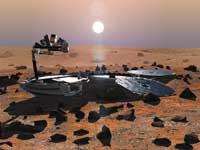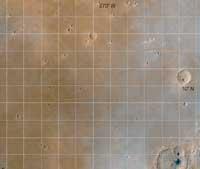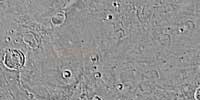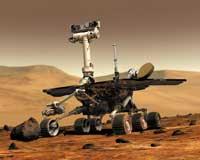All to Mars

The interest in knowing Mars is not yesterday morning and it is not surprising, especially if you consider that it is quite close to Earth and that it has a special color. But, in addition to color, it has other peculiarities, and from them have spread numerous stories and beliefs. For example, around 1870, astronomer Giovanni Schiapparelli claimed to have seen the canals of Mars through the telescope. This provoked the imagination of some, who were considered as artificial channels created by the being.
In addition, according to the seasons, the surface colors of the planet change, so it was thought that in the hot seasons vegetation was produced and in the cold disappeared. In science fiction novels the Martians, small and green, and in 1898 H.G. Wells told in the War of the Worlds that technologically advanced Martians conquered the Earth.

Over time, the steps taken in space exploration have nullified all these convictions. However, Mars remains a goal, especially as its geology has become more known. Some of the Martian geological structures resemble those generated by water on Earth, so in recent years the hypothesis that there is ever liquid water on Mars has been greatly reinforced.
Along with the mention of water, speculations about life soon begin. And it is that to think that there is life on Mars is very attractive and the managers of the space agencies know it. Therefore, NASA uses it as an excuse to get money and protection, without great shame. In addition, the finding on Earth of bacteria living in extreme conditions complicates the hypothesis.
The idea is very saleable and space missions are financed with public money in the United States. That's why they usually don't frustrate people's imagination.
Mars Express, European pioneer
The same thing also happens in Europe and the European Space Agency (ESA) has addressed the water thread for the first time to reach another planet.

The Mars Express spacecraft departed on June 2 from Baiconur and will arrive on Mars at Christmas to answer several questions about the red planet: What forces created surface structures? Why did those forces end? Or does any of them still act? At first was Mars temperate and humid, like the Earth? If so, what made the water disappear? Was there life then? Do these living beings last? Are they found in underground aquifers?
To answer all these questions, ESA will analyze Mars in two ways. The Mars Express mission consists of a probe that will orbit Mars and a lander that will land on Mars. If everything goes well, Mars Express will orbit at least one Martian year, that is, 687 land days. During this time, the closest point to Mars will move so that scientific instruments can collect data from the entire surface. These measurements will serve above all to know the Martian atmosphere and to develop a global map of the surface of Mars.
Before doing so it will launch the Beagle 2 lander to Mars. It is estimated that the big day will be December 20. Beagle 2 does not have its own propulsion system, so it will be launched against Mars. The module will last five days to reach the atmosphere of Mars and then only ten minutes to sit on the skin. In this short period of time, due to atmospheric friction, the weight of the module will be reduced by half, from 60 to 30 kilos, opening two parachutes to slow down. Three airbags will hurt your landing.

Unless unforeseen, Beagle 2 will land in the Isidis Planitia area. Then it will open the solar panels and the working table. Beagle 2 is equipped with two cameras, a microscope and two spectrometers and the vehicle will mainly conduct geological and mineralogical studies.
Isidis Planitia is a large crater located in the equator of Mars. It separates the flat north from the south with numerous craters and, according to the ESA, is the ideal place to find water remains. There are many small volcanic cones that form when magma and water come into contact and explode on Earth. Hence the ESA has chosen this area to support Beagle 2. Therefore and because the region is flat and little stony. Therefore, suitable for landing successfully.
It will not be easy task for the lander to support well and wherever you want. ESA engineers have repeatedly collapsed Beagle 2 in the simulators, but they behave with an accuracy of 200 kilometers and if it does not land relatively close to one of these cones, the best would be a kilometer or a turn, the works will be very complicated to the ESA. Please note that Beagle 2 has no mobility.
NASA, possible removal of thorns


The landing on Mars will be a milestone for ESA and for NASA an opportunity to remove the thorn four years ago. It was then that NASA lost two spacecraft on Mars, one of them emerging, and received very harsh criticism, as the shortcomings were very noticeable. But since then, and especially thanks to the discoveries made by the Mars Odissey ship, sent to orbit Mars in 2001, NASA has raised its head. Mars Oddisey has detected on Mars structures that look like lake beds, river beds and alluvial soils, as well as hydrogen. All indications suggest that this hydrogen may belong to the water molecule, which is frozen under the Martian surface. These discoveries gave definitive support to the Mars Exploration Rover mission.
The vehicles will reach the red planet in January, a few days after Beagle 2, and NASA engineers will face such a complicated operation as the Europeans. But in this case, if you do not land where you want, you will have at least the ability to move. They have an energy of 90 days and can travel 40 meters a day. Many, considering that in 1997 the Sojurner vehicle barely exceeded 100 meters.
One of the vehicles will land on the Gusev crater. The Gusev crater is a deep and wide crater in which the above-mentioned bed beds are located. The crater is attached to a valley of 900 kilometers and on the border between the two seems to have accumulation of sediments. According to the NASA hypothesis, the sediments were transported by the currents.
The vehicle will land at the deepest point of the crater and use an abrasion instrument to drill and study the surface layers of the sediments. In addition, it will measure the x-rays emitted by the lower layers and alpha particles to know the composition of the sediments and the conditions in which they were formed.

Meanwhile, the other vehicle will work in the Meridiani Planum region, on the opposite side of Mars. In it, the earth's crust is organized in layers, as in the sedimentary regions of the Earth, with a mineral hematite, an iron oxide.
This mineral is abundant on Mars, so we see reddish but not crystalline. In the Meridiani Planum region it is crystallized. By crystallizing the hematites in the soil in the presence of water, researchers believe that the same thing happened on Mars. The vehicle, through a high power microscope, will analyze the size and orientation of the hematite granules, in order to determine the formation of the mineral.
As you can see, the main objective of these two missions is to find water remains. But water is not the only opportunity to explain those geological structures they want to investigate. Some geologists believe that the volcanic cones that Europeans want to investigate may be formed by solid carbon dioxide. The Martian atmosphere is mainly composed of carbon dioxide and ice creams abound at the poles. According to some geologists, in contact with lava, carbon dioxide would evaporate explosive and form cones like those seen on Mars.
In regions that Americans want to investigate, water would be replaced by volcanic activity. According to this hypothesis, the layers of sediments could be generated by the ashes poured by the volcanoes, and in the Gusev crater there were lava currents, not water. Along the same lines, proponents of the volcanic hypothesis claim that another way to produce crystalline hematites is the oxidation of the heat of lava with abundant iron.
Who is right? Will these two missions clarify the debate? Maybe. Or, as often happens, the new questions will further complicate the issue. In any case, the most remarkable thing is not that the geological waters of Mars have been drawn. Is it no more surprising to speak so accurately of the geology of a planet 100 million kilometers from us?
Why all missions now?

NASA and ESA travel together to Mars. It seems and is intended. Because spacecraft cannot be sent at any time to other planets. The origin and the objective must be in certain positions so that the trip is as short as possible and the lowest possible fuel consumption. The Earth, Mars and the Sun line up every twenty-six months and space agencies issue missions. This year, in addition to being aligned, Earth and Mars are closer than long ago. Another fifteen or seventeen years will not be so close, so space agencies have not wanted to miss the opportunity.





